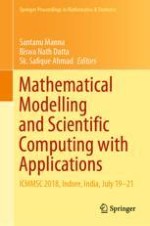This book contains original research papers presented at the International Conference on Mathematical Modelling and Scientific Computing, held at the Indian Institute of Technology Indore, India, on 19–21 July 2018. Organized into 30 chapters, the book presents the recent progress and the most advanced innovations, trends, and real-world challenges encountered and solutions embraced in the applications of mathematics and scientific computing. The book will be of interests to a wide variety of researchers, students and the practicing engineers working in diverse areas of science and engineering, ranging from applied and computational mathematics, vibration problem, computer science, and numerical optimization to physics, chemistry, biology, electrical, civil, mechanical, chemical, seismology, aerospace, and medical sciences.
The aim of the conference is to bring together leading academicians, scientists, researchers, engineers, and industry partners from all over the globe to exchange and share their experiences and research results on various aspects of applied mathematics and scientific computation, like, differential equation, modeling, simulation, dynamical systems, numerical analysis, matrix theory, inverse problems, and solid and fluid mechanics, computational engineering.
